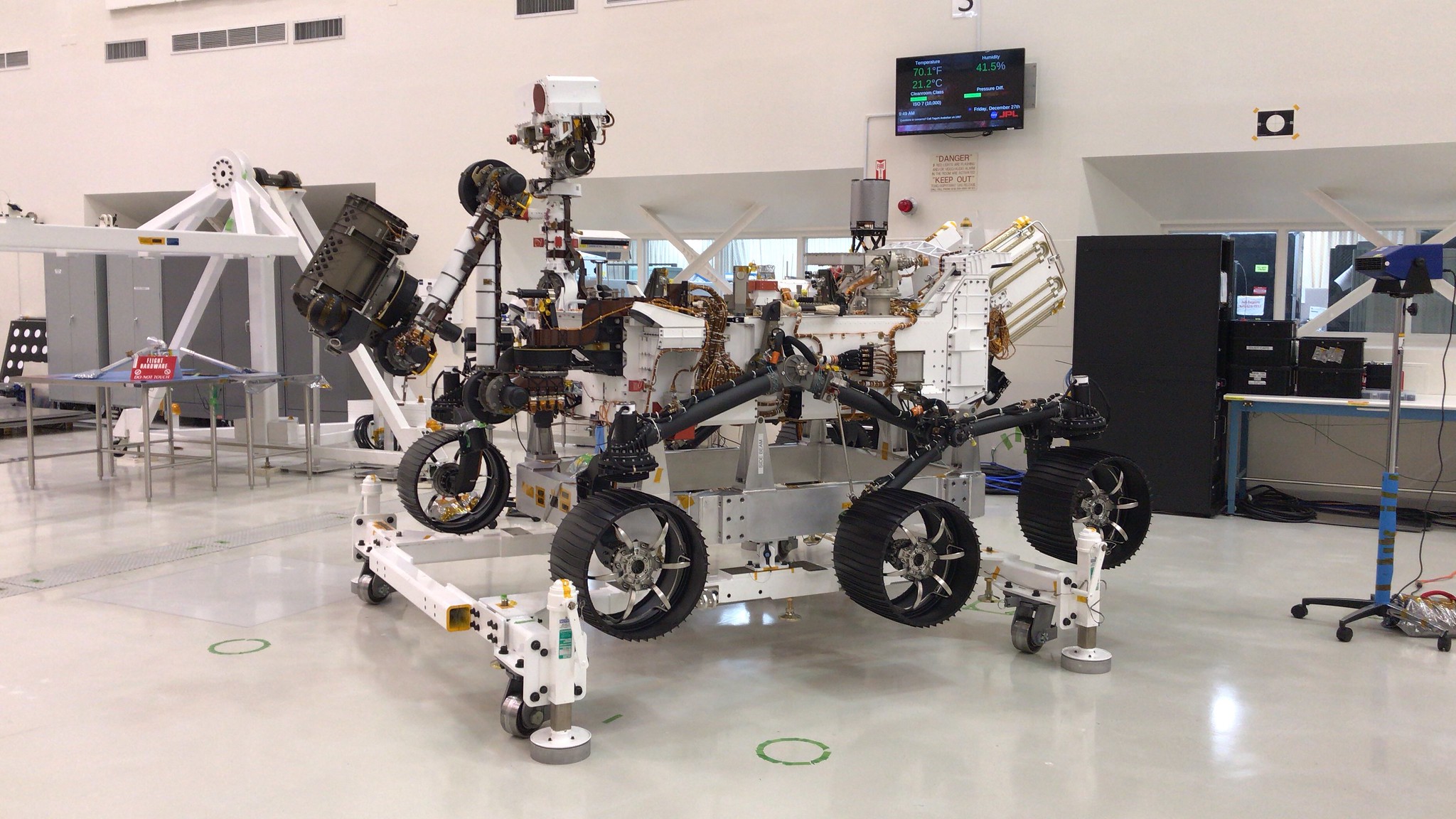
After years of work, NASA’s Mars 2020 rover is ready to explore an alien world. With construction and testing at NASA’s clean room facility now completed, the rover will be packed up and shipped to Florida ahead of final testing before it is strapped to a rocket and launched on its journey to Mars in a few months’ time.
The rover has an ambitious mission: To search for evidence that life once existed on the red planet. “Mars 2020 is looking for signs of ancient life,” Zach Ousnamer, a Mechanical Engineer on the Mars 2020 Rover project at the Jet Propulsion Laboratory, said in an interview posted by NASA. “We’re going to land in the Jezero Crater which is an ancient river delta, and here on Earth, we know those are hot spots for life. So we’re going to go to one on Mars in hopes of finding life there.”
NASA already has a number of instruments on and around Mars, including the Curiosity rover, the InSight lander, and the Mars Reconnaissance Orbiter spacecraft. But the Mars 2020 rover will have new tools and updated instruments which allow it to perform tasks which existing explorers can’t.
When Ousnamer was asked how the instruments on the Mars 2020 rover compare to those on Curiosity, he pointed to several new features on the latest rover. “We’re flying seven new instruments,” he said. “Some of them are similar to those flown on Curiosity but upgraded. We have, for instance, a new instrument MOXIE, which is generating oxygen on the surface of Mars.”
Being able to generate oxygen on the planet is a vital part of preparing for an eventual manned mission to the surface, both for breathing and creating fuel, and MOXIE should be able to produce around 10 grams of oxygen per hour by converting the carbon dioxide which is abundant in the Martian atmosphere.
Other tools in the rover are focused on scientific discovery. “We have SuperCam on the top of the head of the remote sensing mast, doing laser-induced breakdown spectroscopy,” Ousnamer explained. That will allow scientists to identify the chemical composition of rocks and soil that the rover encounters in the Martian environment.
“And then the big thing that is different from Curiosity is that inside the rover is the Adaptive Caching Assembly. That’s a whole suite which takes samples of Mars, puts them in a canister, hermetically seals them, and leaves those on the surface in the hope that in a future mission, we can bring them back to study here on Earth.”
The Mars 2020 mission is set to launch between July 17 and August 5 next year.
Editors' Recommendations
- NASA’s InSight lander detects ‘monster quake’ on Mars
- Watch NASA drop capsule from 1,200 feet to test Mars Sample Return system
- Moon, Mars, and more: NASA extends 8 planetary missions
- NASA’s Mars helicopter will fly furthest yet in next flight
- Look at what a NASA Mars orbiter spotted from 180 miles away



